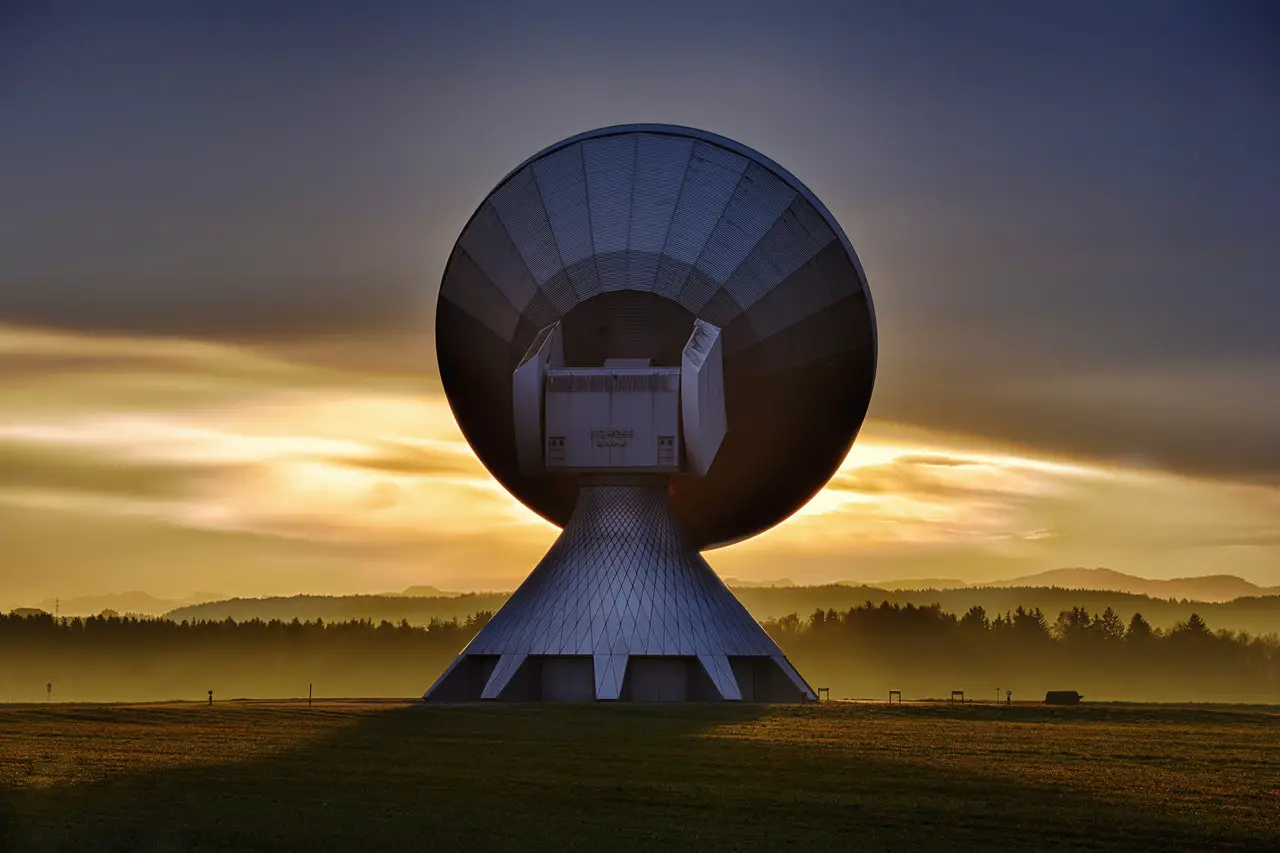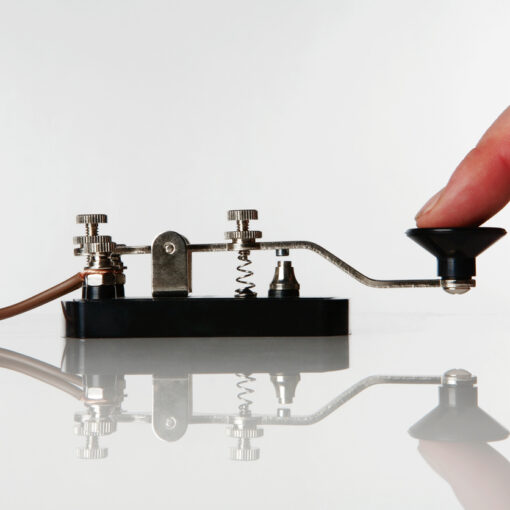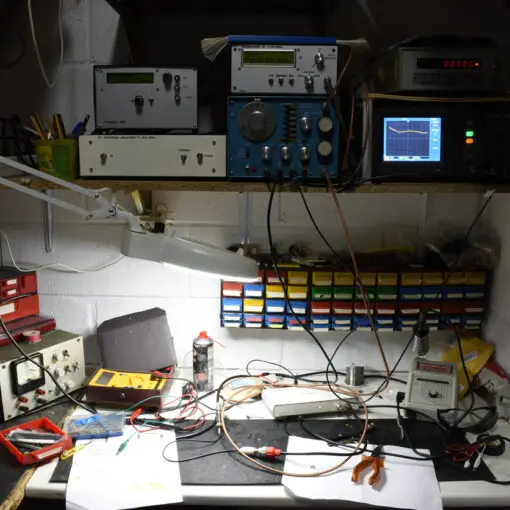As a general rule of thumb, your everyday “average” ham radio is going to have an effective range of somewhere between 2 miles and 18 miles.
Obviously, there are a whole bunch of different factors that come into play to determine what the useful range for your radio set up is.
But if you’re rolling with a handheld ham radio and are on generally flat ground you are likely going to be able to squeeze anywhere between 2 miles and 18 miles arrange out of your set up.
Luckily, though, there are quite a few things you can do to dramatically boost your ham radio signal.
Some of these methods are more effective than others.
Some of these methods are more expensive than others.
At the end of the day, though, you’re going to be able to boost your ham radio signal effectively to get the results that you are looking for.
Let’s jump right in!
Upgrade Your Antenna
The biggest upgrade you can make to the range of your ham radio system comes after upgrading the actual antenna you’re using.
One of the reasons that handheld radios are so limited in their range (if you can call between 2 and 18 miles arrange limited) is because the antennas that these radios broadcast from – and receive from – are so small.
You might have a quality handheld ham radio that has an antenna that’s just 2 to 3 inches long.
Maybe the antenna is a little bit longer than that (especially if you have a foldout unit), but it probably isn’t going to be much longer.
Even just adding an accessory antenna can dramatically extend your range, sometimes tripling or more your effective range without making any other upgrades to your ham radio set up.
Portable ham radio antenna arrays are available for all of the most popular handsets on the market today. These usually come in their own little pouch, can be deployed in record time, and are going to physically attach to the actual radio unit itself.
They also happen to be super cost-effective!
There are other antenna setups that you can invest in as well – larger, stationary antennas (including huge backyard antenna arrays for worldwide communication) – if that’s something that you are interested in.
At the end of the day, though, the antenna upgrade is going to improve your range more than maybe anything else.
Radio Repeaters
Another option that you can go with is called a radio repeater or a radio re-broadcaster.
Even in the best of conditions – and even across really flat land with very few obstructions – you are still going to have a tough time pushing the range of a traditional ham radio beyond say 20 to 25 miles.
Stick a repeater into the mix, though, and you’ll be able to dramatically increase the range and reliability of your signal.
The way a repeater works is pretty ingenious:
A repeater is physically set up somewhere (ideally at the highest possible elevation in the area) and it works to capture the initial signal of the ham radio you are running.
As soon as that signal is captured by the repeater station it is then rebroadcast out using the actual repeater hardware itself. Because this repeater antenna is almost always gigantic (especially compared to a handheld radio) and much more powerful the resulting signal is amplified and rebroadcast across a much wider range as well.
This is kind of the way that emergency services radio signals work all across the country (and all across the world, even).
The idea is to allow local handsets to transmit to a repeating station which then beefs up the signal and then redistributes it – exactly as it arrived – out across its effective range.
You might take a radio that had a range of between 2 and 18 miles and turn it into a radio that can reach out to others 50 miles or more away – sometimes a lot more than that, too.
Another really cool thing about repeaters is that they can sort of be “daisychained” together with one another.
This means that instead of bouncing from a handset to a repeater to another handset the signal is moved from the original handset to a repeater, onto another repeater (and as many as necessary from there) until the signal gets to its ultimate destination.
The sort of “mesh network” setups can allow for extreme long-distance transmission of ham radio signals from small, relatively underpowered hardware.
Users will have to be sure that they are using the correct frequency to leverage the repeater, though.
Repeating stations are built using two independent frequencies that work together in concert with one another – a frequency to receive the messages that need to be repeated and a frequency used to transmit that same signal out.
Thanks to modern technology these kinds of solutions are almost seamless. A repeating station can receive a message, flip it to the opposite signal and then rebroadcast it inside of 50 ms or so.
Higher Quality Receivers
Another way to improve the signal of the ham radio you are using is to upgrade or invest in high quality receivers.
The electronics that are being used inside of your receiver (and used to rebroadcast messages) have to be sensitive enough to pick up on weaker signals but not so sensitive that you are picking up on a lot of ambient “stuff” at those same frequencies.
As a general rule of thumb, a high quality receiver will be about 50% more sensitive what it comes to picking up audio signals than it is when it comes to broadcasting them out.
Make sure that your receiver fits that bill and you should be good to go.
Wide Area Network Solutions
Of course, if you want to simplify things quite a bit you might instead want to become part of a local Wide Area Network solution.
This obviously isn’t going to be feasible for everyone (not every locality has a Wide Area Network solution already established). But when this infrastructure exists it can be a really easy way to sort of slide right into a ham radio boosting system made specifically for this form of communication.
There are quite a few areas across the country that have their own Wide Area Network infrastructure built to facilitate communications for up to 300 miles (or more) without a lot of issue.
Some of them are private, some of them are semi private, and some of them are wide open networks intended to be used by anyone and everyone licensed to operate a ham radio in the first place.
They are definitely well worth a closer look if you’re serious about maximizing the range on your ham radio.
You might even want to consider getting together with fellow ham radio operators in your area to establish your own Wide Area Network. It may be a small investment put together by all of the members but it could change the way that all of you use your ham radio gear from now on.
Elevate the Antenna Array
A simpler solution for extending the range of your ham radio is to just elevate the antenna itself.
When you are working with a handheld set up all this means is getting to the top of the tallest building, climbing the tallest hill, or positioning yourself on top of the nearest mountain.
The higher up you are the more range you are going to have for a couple of different reasons, not the least of which is being able to eliminate a lot of the physical obstructions at ground level that are going to block and bottle up your ham radio signal.
There’s a reason why huge antenna arrays – not just for radio but also for cellular signals, etc. – are positioned on top of mountaintops, tall towers, and other positions that allow them to gain the most possible height in the area.
Antennas work by radiating out a signal for 360° from its central point of transmission. By extending that central point of transmission you’re letting the signal move out further and further without obstruction, boosting its reception sometimes by as much as two or three times.
Increase Power Output to the Antenna
The last thing we want to touch on to help boost the range of your ham radio set up is increasing the power output to the antenna itself.
The amount of power being pushed to your antenna is going to dictate how far that signal is going to travel.
Small radios (obviously) have lower levels of power being pushed to the antenna and that’s why they have shorter ranges. Boost that power up – even just a little bit – and you might be able to increase range significantly.
This isn’t always going to be possible (especially when you are talking about handheld radios), but you want to try and increase power whenever you need to make a transmission.
Some ham radio operators have rigged up systems that increase power output dramatically every time a new message is being sent out, tied to the actual transmission of that message directly. Otherwise the radio set up is in “low-power” mode, only receiving signals within its standard range.
That may or may not work for you but is definitely something you want to look into!





